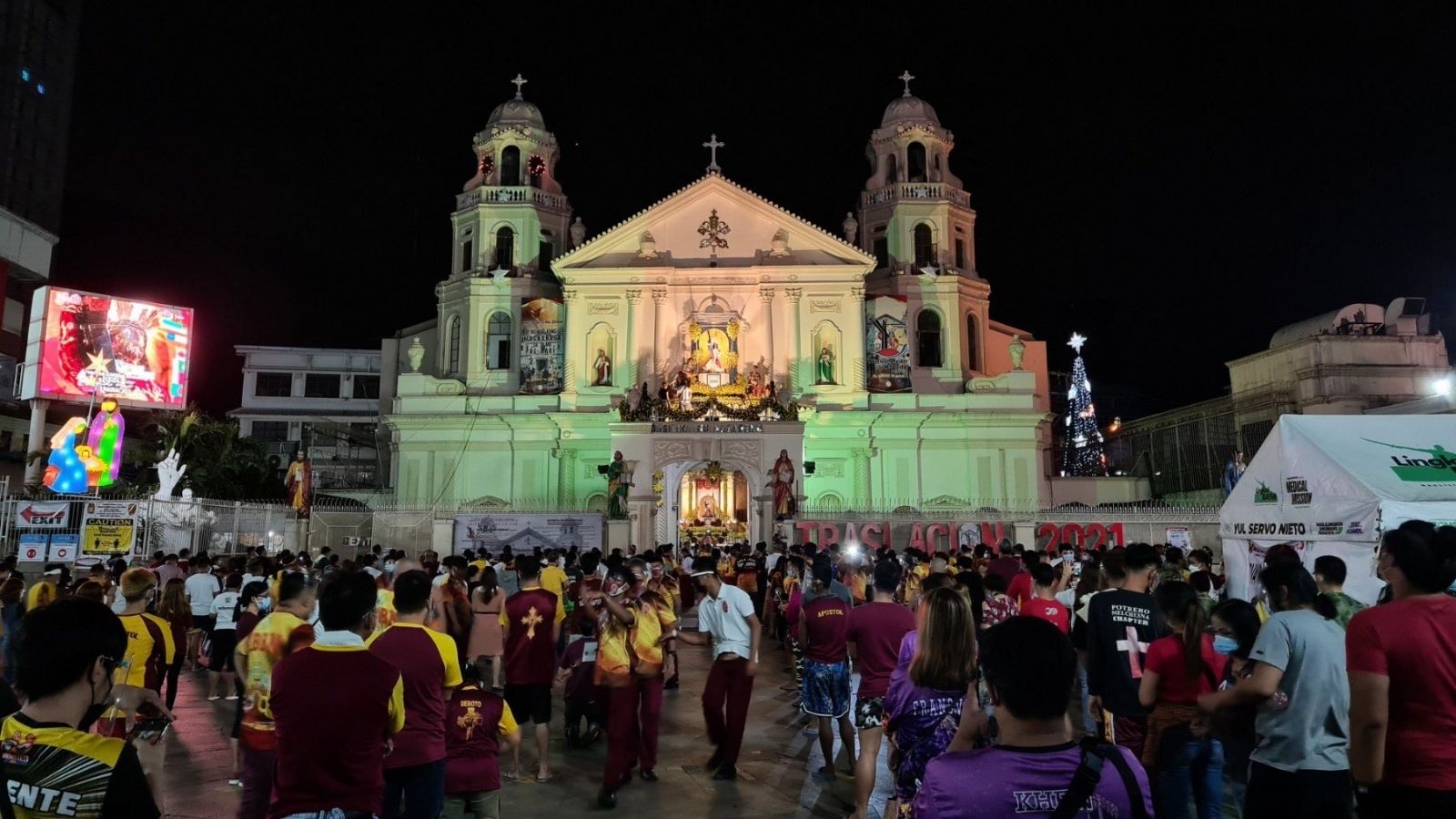
Manila Apostolic Administrator Bishop Broderick Pabillo exhorted Catholics to connect with Jesus amid their sufferings during the Covid-19 pandemic in a Eucharistic celebration for the feast of the Black Nazarene at the Quiapo Church on Jan. 9.
“We do not deny the sufferings that are with us, but put Jesus there. Ilagay si Hesus, at mata-transform po ang ating kahirapan at magiging kaligtasan (Put Jesus there and our sufferings will turn into salvation),” Pabillo said.
LOOK: Manila Apostolic Administrator Bishop Broderick Pabillo begins homily for the first fiesta mass at Quiapo Church.
#Traslacion2021 #BlackNazareneFeast2021 pic.twitter.com/fxJSsmYtQJ
— Manila Public Information Office (@ManilaPIO) January 8, 2021
Pabillo reminded Nazareno devotees that Christ is one with the people in their problems as he discussed the theme, “Huwag kayong matakot, si Hesus ito!”
“Ang Poong Nazareno ay parang isang magnet … hindi lang tayo naa-attract sa kanyang pag-ibig, at hindi lang sa isang imahen, ngunit sa Diyos din na nakikiisa sa ating kalagayan na pasan ang krus,” he said.
(The Nazarene is like a magnet, we are not only attracted to His love, and not only to an image but also to God who shares the hardships of bearing the cross.)
The theme was derived from Matthew 14, where Jesus’ walking on water frightened his disciples. Jesus reassured them, saying, “Take courage! It is I. Don’t be afraid.”
In a previous interview, Msgr. Hernando Coronel, rector of the Minor Basilica of the Black Nazarene, reminded Catholics to remain faithful to the Lord amid the Covid-19 pandemic.
“Ang ating Panginoong Hesukristo ay sinasamahan tayo sa ating paglalakbay sa ating pagsubok. Hindi naman niya tinatanggal ang kahirapan o problema, kasama natin sa paglalakbay. Kaya kumapit tayo, magtiwala tayo, umasa tayo,” he told the Varsitarian.
(Our Lord Jesus Christ accompanies us on our journey through challenges. He may not eliminate the problem for us, but he joins us in the battle. So let us hold on, let us trust, and let us hope in Him)
Traslacion’s new normal
Pabillo said the pandemic changed the way traditions were being celebrated, but more people became nearer to Christ.
The Covid-19 crisis caused the grand procession to be canceled, but Manila Police Chief Brig. Gen. Leo Francisco reported that at least 400,000 devotees had flocked to the vicinity of Quiapo Church on Jan. 9.
NOW: Devotees attend the first fiesta Mass of the feast of the Black Nazarene at the Minor Basilica of the Black Nazarene (Quiapo Church). Manila Apostolic Administrator Bishop Broderick Pabillo will lead the earliest Mass.
(Photos grabbed from Manila PIO) pic.twitter.com/6TfaF4bcb5
— The Varsitarian (@varsitarianust) January 8, 2021
Localized celebrations were also observed, where a replica of the Black Nazarene was brought to different areas around Metro Manila and nearby cities from Dec. 31 to Jan. 7.
Novena Masses were also held from Dec. 31 to Jan. 9 and the traditional pahalik of the image of the Black Nazarene was replaced by a patanaw (viewing) from the balcony of Quiapo church and in Plaza Miranda.
A total of 15 Masses were celebrated for Nazareno’s feast. Only 400 churchgoers were allowed to enter the Quiapo Church for each of the 15 Masses, allowing a total of 6,000 devotees to attend the Eucharistic celebrations in-person.
The first solemn Mass was held at 4:30 a.m. instead of the usual 12-midnight schedule due to curfew restrictions in Metro Manila.
The Masses were also streamed live on the Quiapo church’s Facebook page.
The mesquite wood image of the Black Nazarene depicts Jesus Christ kneeling while carrying the cross.
The image of the Black Nazarene was partially destroyed during the Battle of Manila in 1945.
Gener Manlaqui, a Filipino saint carver, was commissioned by the Archdiocese of Manila to create the present-day Nazarene replica, using the head of the original statue.
Traslacion is celebrated every Jan. 9 to commemorate the transfer of the Black Nazarene from San Nicolas de Tolentino Church inside Intramuros to Quiapo Church in 1787. S. T. Sadang with reports from Mariel Celine L. Serquiña

0 Comments